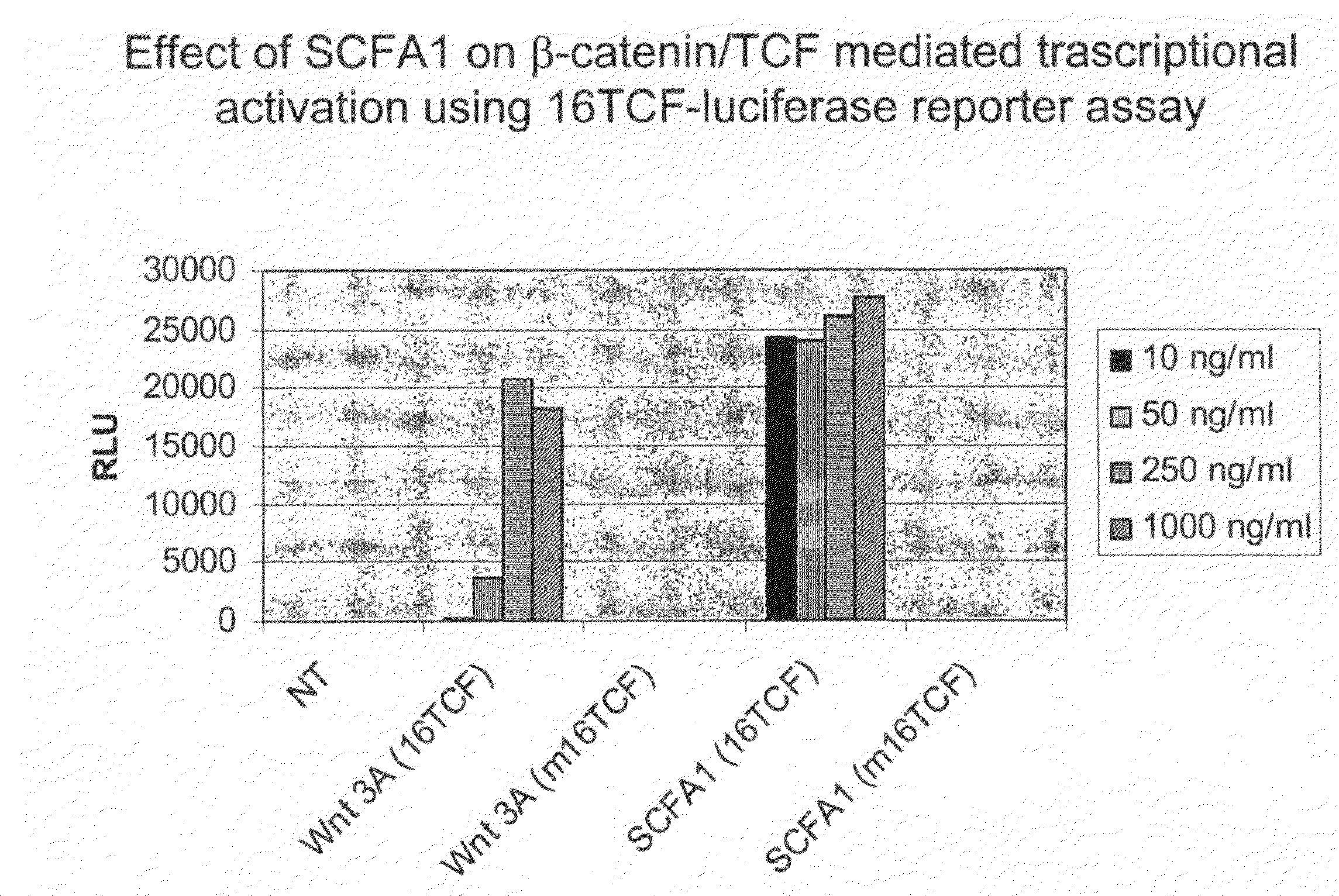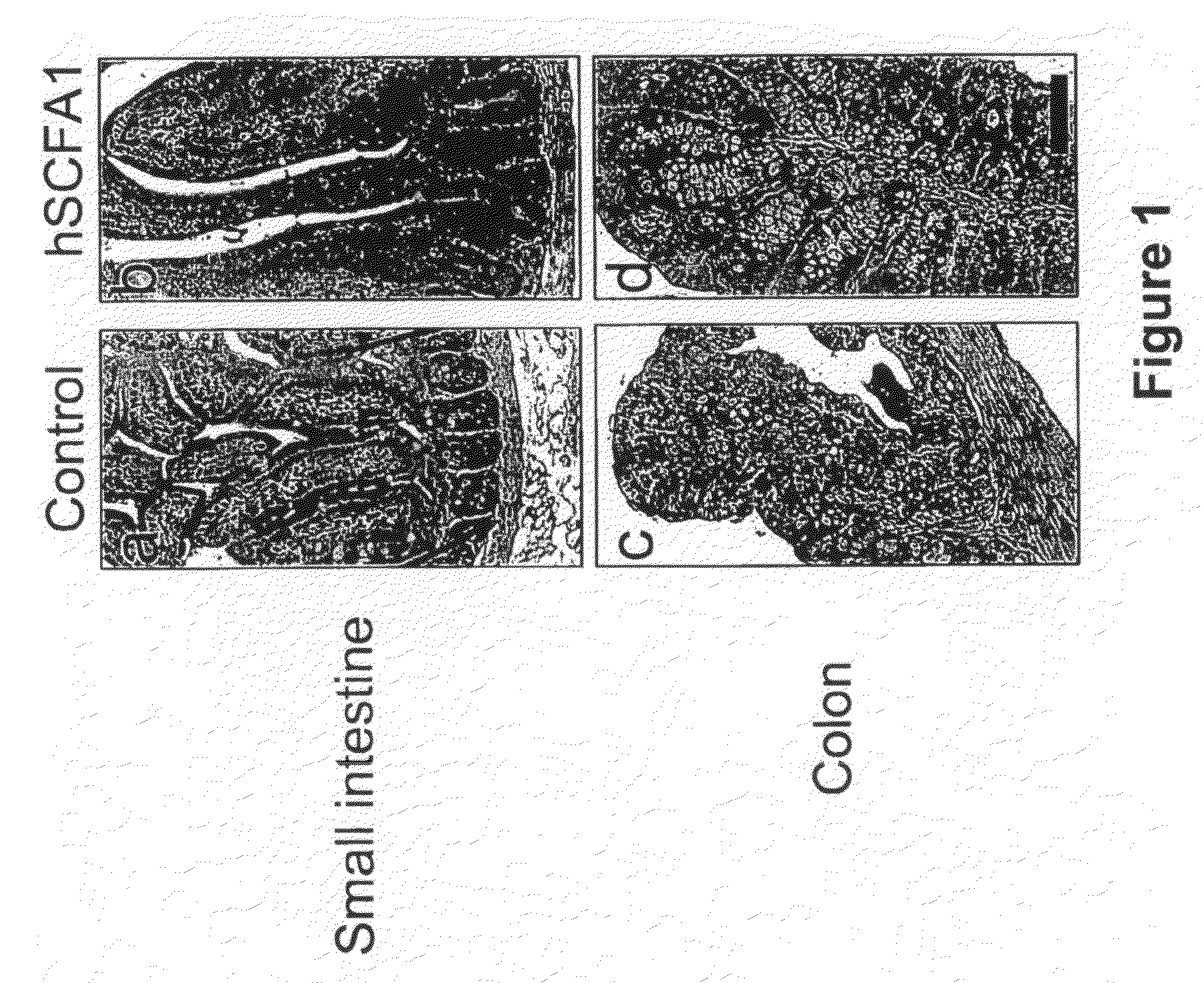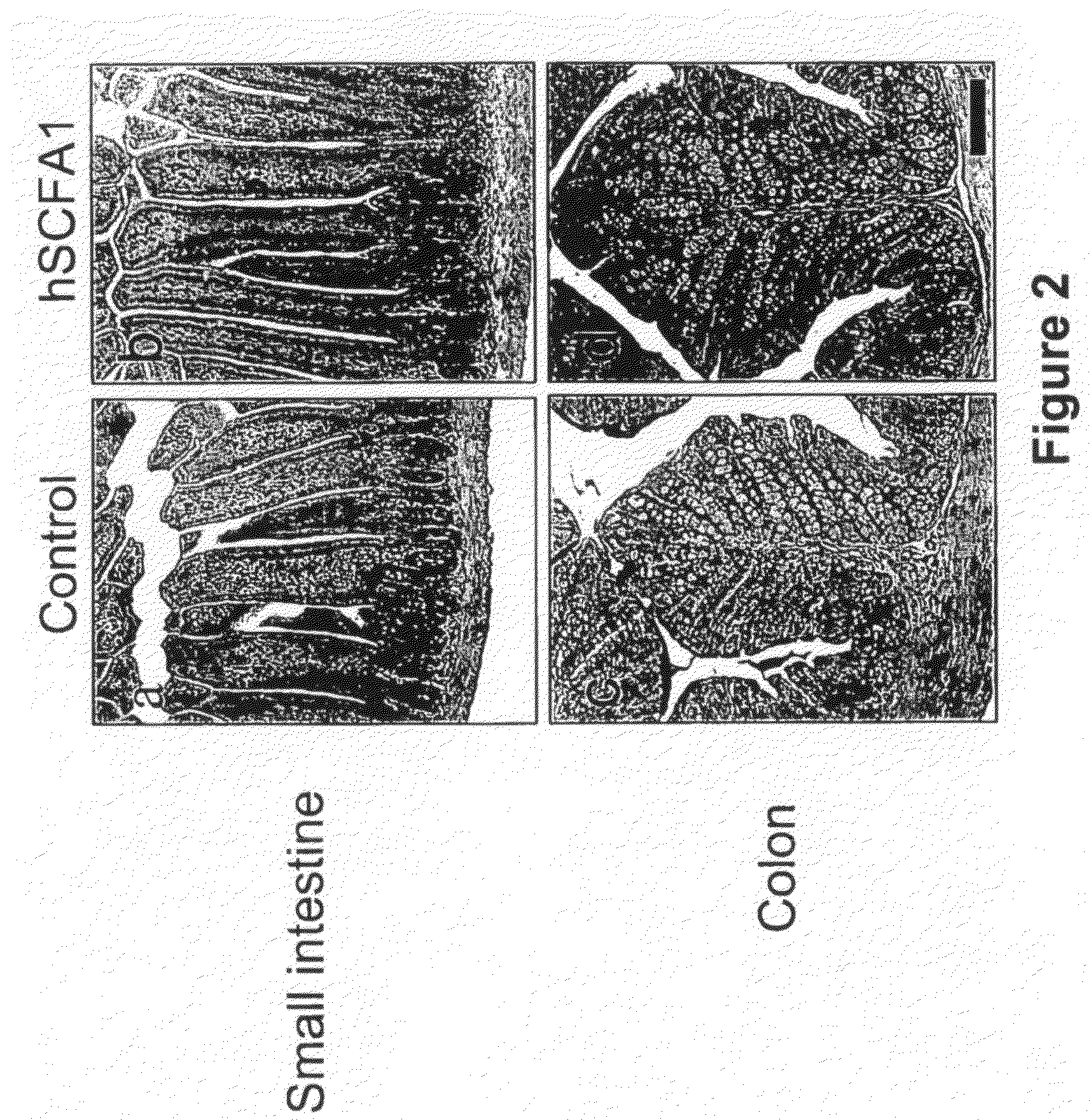Stem Cell Factor-Like Protein Scfa1 and Uses Thereof
a stem cell factor and protein technology, applied in the field of stem cell factorlike protein scfa1, can solve the problems of direct and indirect toxicity mucositis is the inflammation of the mucous membrane, and injury to the oral and gastrointestinal mucosa
- Summary
- Abstract
- Description
- Claims
- Application Information
AI Technical Summary
Problems solved by technology
Method used
Image
Examples
example 1
Cloning and Expression of SCFA1
[0273]In order to express SCFA1 polypeptide, the full-length SCFA1 DNA (SEQ ID NO: 1) was PCR amplified from a cDNA library that was constructed using human mRNA from cerebellum (Ambion). The sequence was also isolated from pools of cDNAs that were derived from human mRNAs from various tissues.
[0274]The first round of PCR was performed using the forward primer (SEQ ID NO: 17) and reverse primer (SEQ ID NO: 18). A second round of PCR was then performed using the primary PCR as template using the forward primer SEQ ID NO: 19 and reverse primer of SEQ ID NO: 20. The restriction sites NheI and XbaI, which are embedded in the forward and reverse primers (SEQ ID NO: 21 and 22) were used for subcloning the NheI-XbaI fragment into the mammalian expression vector pIntron / Igk. The NheI-XbaI fragment contains polynucleotide sequence (SEQ ID NO: 3), which encodes amino acids 31 to 272 sequence (SEQ ID NO: 4) of the full-length SCFA1 (SEQ ID NO: 2). The mammalian e...
example 2
The Adenoviral Vector
[0275]The polynucleotide of SEQ ID NO: 5 was amplified from the pIntron / Igk vector together with the Igk leader sequence and the V5H is6 tag of the pIntron / IgK vector, and cloned into the pAdenovator-CMVIntron adenoviral vector (SEQ ID NO:27) as follows. The polynucleotide sequence (SEQ ID NO: 5), which encodes pIntron-SCFA1-V5His6 (SEQ ID NO: 6) was amplified from the pIntron / IgK using the forward primer of SEQ ID NO: 23 and the reverse primer of SEQ ID NO: 24. The restriction enzyme sites XbaI and NotI that are contained in the primers were used to clone SEQ ID NO: 5 into the NheI and NotI sites of the pAdenovator-CMVIntron vector (SEQ ID NO: 27).
[0276]The adenoviral vector pAdenovator-CMVIntron was obtained by modifying the pAdenoVator CMV5-IRES-GFP (Qbiogene, Carlsbad, Calif., U.S. as follows. pAdenoVator-CMV5-IRES-GFP was digested with SpeI to remove its MCS, IRES and GFP and ligated with PCR amplified Intron-MCS-V5His-BGH polyA from pcDNA / Intron vector usi...
example 3
Administration of Recombinant Adenovirus as a Model to Evaluate the Biological Activity of SCFA1
[0278]The SCFA1 recombinant adenovirus was administered to normal mice to determine the effect SCFA1 on the intestinal and colonic epithelium. Prior to injection of adenovirus, BALB / c mice, 9-11 weeks of age, were anesthetized using isoflurane. 1×1010 viral particles per mouse were injected via the retro-orbital vein. The same titer of control virus (empty virus) was used in control animals. Three mice were used in each experimental group, and were sacrificed 3 days after receiving the virus injection.
[0279]4 hours before sacrifice, 1 mg of bromodeoxyuridine (BrdU) was injected intraperitoneally (IP) to determine in vivo proliferation of epithelial cells. Various tissues including small intestine, colon, spleen, liver and bone marrow were collected and fixed in formaline.
[0280]Paraffin embedded sections were stained with hematoxyline and eosin (H&E) for histological evaluation. Sections w...
PUM
| Property | Measurement | Unit |
|---|---|---|
| molecular mass | aaaaa | aaaaa |
| molecular weight | aaaaa | aaaaa |
| weight | aaaaa | aaaaa |
Abstract
Description
Claims
Application Information
 Login to View More
Login to View More - R&D
- Intellectual Property
- Life Sciences
- Materials
- Tech Scout
- Unparalleled Data Quality
- Higher Quality Content
- 60% Fewer Hallucinations
Browse by: Latest US Patents, China's latest patents, Technical Efficacy Thesaurus, Application Domain, Technology Topic, Popular Technical Reports.
© 2025 PatSnap. All rights reserved.Legal|Privacy policy|Modern Slavery Act Transparency Statement|Sitemap|About US| Contact US: help@patsnap.com



